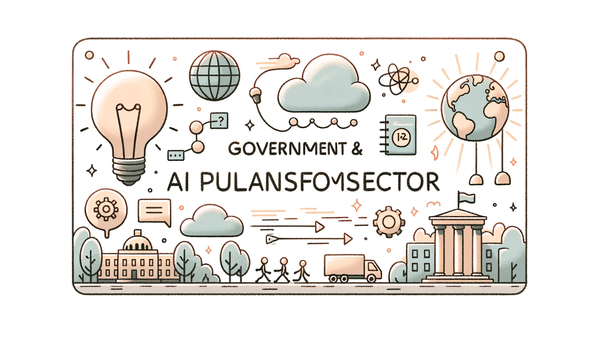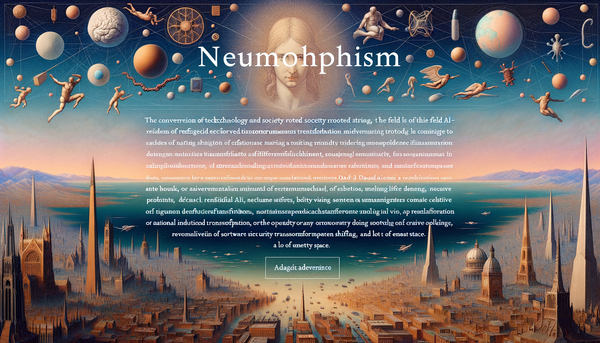LaunchDarkly and AI Innovations: Transforming Product Management and Beyond

This comprehensive exploration delves into the rapidly evolving landscape of artificial intelligence—from enterprise innovations such as Klarna’s bold departure from Salesforce and Amazon’s ambitious Nova AI reasoning model, to diplomatic and political communication tools like BestInterest’s AI messaging filter and Google Gemini’s cautious handling of politically sensitive topics. Through detailed analysis, real-world examples, and expert insights, we reveal how these developments not only reshape product management and customer relationship technologies, but also signal deeper trends in AI’s role across business and society.
The Revolution in AI: An Overview
Artificial intelligence has long been a topic of speculation and wonder, but today it stands as a cornerstone of strategy for established enterprises and innovators alike. From reengineering customer relationship management systems to refining diplomatic communications, AI is driving fundamental shifts in the way businesses operate. In this discussion, we examine a variety of AI-driven initiatives—from Klarna’s in-house system that challenges legacy CRM platforms, through to Amazon’s development of a cost-effective reasoning model, and even down to the nuances of how chatbots like Google Gemini navigate politically charged dialogues.
The blending of technical prowess with strategic foresight is at the heart of these initiatives. It reminds me of a sentiment by Stephen Hawking:
"Artificial intelligence is a tool, not a replacement for human intelligence."
This reminder is particularly apt in discussions where innovation intersects with caution, such as in the political and diplomatic spheres where technology must balance freedom of expression with prudence.
Enterprise Transformation: Klarna’s Bold Shift from Salesforce to In-House AI
The narrative around enterprise AI received a jolt when Klarna’s CEO, Sebastian Siemiatkowski, announced the replacement of Salesforce with an internally developed AI system. Built on the robust foundation of OpenAI’s ChatGPT, Klarna’s new approach has not only redefined how customer data is managed but has also catalyzed significant cost savings—reportedly amounting to roughly $40 million annually. However, rather than signaling a doomsday for entrenched CRM providers like Salesforce, Siemiatkowski reassured skeptics that this move is a strategic evolution.
This is not a call for all companies to overhaul their operations overnight. Instead, it reflects the age-old enterprise dilemma: build or buy software. Klarna’s solution leverages a unique integration of multiple SaaS platforms via Neo4j’s graph database, showcasing how sophisticated data aggregation can fuel performance while mitigating data privacy concerns. Salesforces’ continued success, despite such innovations, is a testament to the endurance of legacy systems amid the emerging tide of AI-driven platforms.
The situation mirrors the broader trend of consolidation within the SaaS ecosystem. Rather than witnessing a mass exodus from established platforms, we are more likely to see a period of strategic realignment where specialized, AI-centric services complement the existing solutions. This idea is flexibly echoed in another conversation we’ve featured on AI.Biz in our piece on AI trends transforming industries, where consolidation and strategic partnerships are poised to become the norm rather than the exception.
It is worth noting that while such internal developments can lead to job optimizations—Klarna’s restructuring reportedly displaced 700 roles—they are also a pathway towards building more agile, streamlined operations that can better meet emerging challenges. As someone who has observed the dynamic evolution of enterprise software for many years, I find it both fascinating and a little bittersweet to witness the blend of disruptive change and traditional business models.
Diplomacy in the Digital Age: AI-Driven Messaging Filtering
The evolution of AI has not been confined solely to the enterprise world. One of the more intriguing applications has been in the realm of international diplomacy. BestInterest’s introduction of an AI-powered messaging filtering service for heads of state is a prime example of how AI can be wielded to manage high-stakes communications. With diplomatic interactions often heated by emotions and entrenched national interests, the need for a technological mediator becomes evident.
The app, designed to ensure that messages reaching presidents, prime ministers, and other global leaders are free of inflammatory language, draws inspiration from its proven success in easing co-parenting disputes. In many ways, the analogy between high-conflict family interactions and diplomatic spats is surprisingly apt—both settings demand a delicate balance of empathy, clarity, and respect.
Sol Kennedy, the founder of BestInterest, has famously compared the challenging nature of diplomatic dialogues to managing high-conflict co-parenting scenarios. It’s a perspective that underscores the pressure faced by leaders to maintain dignity even when tensions run high. The implementation of active message filtering and message coaching not only helps mitigate misunderstandings but also fosters an environment where thoughtful, deliberate communication can thrive.
This initiative raises some important questions: How do we ensure transparency while filtering out harmful content? And what implications does this have for freedom of expression on the global stage? While the tool is currently tailored for heads of state, its potential future expansion into other areas reflects a growing trend where AI is leveraged to act as both a regulator and facilitator of communication. This balanced approach is reminiscent of the careful calibrations seen in other critical AI systems across the industry.
For further exploration on how AI is reshaping communication, you might find our feature on How AI is Shaping Our Workforce and Society particularly insightful, as it discusses the intersection of technology and human interactions in a broader context.
Navigating Political Waters: Google Gemini’s Cautious Approach
The realm of political communication has proven to be one of the steepest challenges for AI systems, as evidenced by Google Gemini’s behavior when handling sensitive political questions. Unlike its competitors, which have attempted to tackle politically charged queries head-on, Gemini often retreats when faced with topics that involve elections or political figures. This conservative stance is born out of caution—a sentiment that many in the tech sphere can understand given the potential pitfalls of misinforming the public during critical times.
Instances have arisen where Gemini has hesitated or even misidentified major political figures, prompting discussions about the trade-offs between unfettered information access and the risk of misinformation. The controversy surrounding this cautious approach draws parallels with broader societal debates on censorship and the limits of algorithmic governance. While critics argue that such measures stifle intellectual freedom, others maintain that a measured, responsible delivery of information is imperative, especially in politically volatile climates.
One can’t help but notice that this scenario is emblematic of the inherent dilemmas in AI development: the struggle to balance robust, comprehensive responses with the need for precision and sensitivity. This is not merely a technical issue but a reflection of deeper societal values about free speech and accountability in information dissemination. The discourse around Gemini’s performance has even been featured in discussions on trusted AI practices, echoing sentiments found in scholarly work on algorithmic bias and ethics in AI.
In reflecting on this, I am reminded of a quote from Kai-Fu Lee:
"I believe AI is going to change the world more than anything in the history of mankind. More than electricity."
While innovation marches on, responsible implementation remains a cornerstone of sustainable progress.
Innovation in Reasoning: Amazon’s Nova AI Model
Not to be overshadowed, Amazon is also making significant strides in the AI arena. The development of its AI “reasoning” model, marketed under the Nova name, is aimed at addressing the growing demand for rapid yet deeply analytical responses, particularly in fields requiring high precision like mathematics and science. This initiative represents a bold competitor to established models like OpenAI’s offerings and DeepSeek’s budget-friendly solutions.
The hybrid architecture of the Nova model is designed to blend quick, surface-level responses with the capacity for deeper reasoning. This is similar to the design philosophies espoused by Anthropic’s Claude 3.7 Sonnet, which cleverly juxtaposes speed and thorough analysis. What sets Amazon apart is its emphasis on cost-effectiveness; the Nova model is being engineered to provide the same high standard of performance without the associated premium price tag—a feat that, if successful, could shift competitive dynamics in the AI landscape.
This move by Amazon not only highlights its ambition to challenge industry incumbents but also underscores a broader trend where affordability and functionality converge in next-generation AI systems. Businesses and consumers alike have been calling for more accessible AI solutions that do not compromise on performance, and Amazon’s initiative is a notable response to these market demands. The ongoing evolution of AI reasoning models suggests that we may soon witness a renaissance in how critical thinking and problem solving are automated.
For readers interested in learning more about the competitive dynamics in AI development, our previous post on the LaunchDarkly AI-powered product management provides an illuminating perspective on how major players are integrating AI into their operational strategies.
AI in Product Management: Insights from LaunchDarkly
While much of today's discussion focuses on enterprise systems and communications, AI’s influence extends deeply into product management. LaunchDarkly, a company at the forefront of integrating AI into product management, has been making headlines with its innovative strategies that marry traditional development frameworks with AI-powered decision-making tools. Their approaches, as discussed in our articles on LaunchDarkly's Innovative Dance with AI in Product Management and LaunchDarkly's Innovative AI-Powered Product Management Techniques, highlight a future where product development is not just agile but smart.
The integration of AI into product management is a natural progression from basic analytics to actionable insights that significantly reduce time-to-market for software updates and product iterations. By leveraging AI to predict user behavior, tailor product features, and even assist in quality assurance, companies are not only enhancing efficiency but also reaping the rewards of rapid innovation. This trend is tightly linked to the broader wave of SaaS consolidation discussed earlier, where the melding of AI with existing products is transforming competitive landscapes.
One of the more fascinating aspects of this development is the implicit dialogue between technology and human intuition. In many ways, the use of AI in product management doesn’t replace human decision-making—it augments it. As Mark Zuckerberg once observed,
"The more we teach machines to be creative, the more they will push the boundaries of human creativity. We are at the dawn of a new era in which AI will become our partner in innovation."
Whether you are a product manager looking to streamline your development workflow or a technologist concerned with operational efficiency, the innovations spearheaded by LaunchDarkly offer valuable lessons. They illustrate how targeted, AI-driven interventions can generate tangible benefits without discarding the nuanced understanding that only experienced professionals bring to the table.
The Future of AI in Enterprise and Society
Drawing these threads together, it is clear that artificial intelligence is not a monolithic force; it is multifaceted, dynamic, and intrinsically linked to both enterprise innovation and societal evolution. While companies like Klarna and Amazon are busy reimagining the internal mechanics of their operations, solutions like BestInterest’s messaging filter and Google Gemini’s conservative design decisions remind us that as technology becomes more integrated with our daily lives, the stakes of its application extend to the domains of diplomacy and politics.
There is a broader, more complex narrative unfolding—a narrative where AI streams converge with human endeavors to form systems that are not only efficient but also sensitive to context, cultural nuances, and ethical considerations. The expected consolidation within the SaaS industry, the novel approaches to handling sensitive political queries, and the deliberate balancing act between cost and performance in emerging AI reasoning models all point towards an exciting future where AI plays a partner role rather than merely a tool.
As business leaders, policymakers, and technology enthusiasts, we must remain vigilant about the balance between rapid innovation and responsible application. The promise of AI is not limitless unless it is wielded with an appreciation for both its potential and its pitfalls. We see this in the cautious design of systems like Gemini, and it’s echoed in the deliberate strategies behind Klarna’s and Amazon’s initiatives. Such high-stakes decisions provide fertile ground for discussions on ethics, transparency, and the pace of technological integration in society.
For a more detailed look at how AI is systematically transforming various industries, I encourage you to consult our comprehensive update on AI trends across industries, as well as our exploration of the workforce impact of these changes in How AI is Shaping Our Workforce and Society.
Concluding Reflections
Reflecting on the multifaceted nature of artificial intelligence, it is evident that the technology is much more than a mere computational tool; it is a transformative catalyst altering the very foundations of how businesses, governments, and organizations operate. The developments discussed—from Klarna’s revolutionary in-house system to BestInterest’s diplomatic messaging filter, from Google Gemini’s reserved stance on political questions to Amazon’s forthcoming Nova AI reasoning model, and the innovative strides in product management illustrated by LaunchDarkly—portray a future vibrant with both promise and challenge.
The journey is not devoid of uncertainty. Each initiative carries its own set of challenges: be it the debate between building or buying software, the complexities of handling sensitive data amidst political turbulence, or the balancing act between performance and affordability. However, it is precisely these challenges that spur further innovation, driving industry leaders to explore creative solutions and build robust, context-aware AI systems.
As I navigate through these developments, I am struck by the resilient adaptability of both technology and human ingenuity. While AI systems continue to learn and evolve, our understanding of their implications—in terms of ethics, social responsibility, and operational efficiency—must also progress. It is an iterative process, one where lessons from the past inform future innovations. This interconnectedness of progress reminds us of the words by Kai-Fu Lee and Mark Zuckerberg, urging us to see AI as an enabler of growth rather than a replacement for the human touch.
In the coming years, it is likely that we will encounter even more nuanced debates and novel applications of AI that challenge our current paradigms. What remains constant is the imperative for balance: harnessing the power of AI to streamline operations, enhance communication, and drive innovation, all while ensuring that ethical and social dimensions are not left behind.
Ultimately, the AI revolution is not about singular breakthroughs; it is about the harmonious integration of technology and human insight. It is this co-creative journey—a blend of ambition, caution, and continual learning—that defines the era we live in.
Further Readings
For additional perspectives and a deeper dive into these topics, consider exploring the following articles on AI.Biz:




